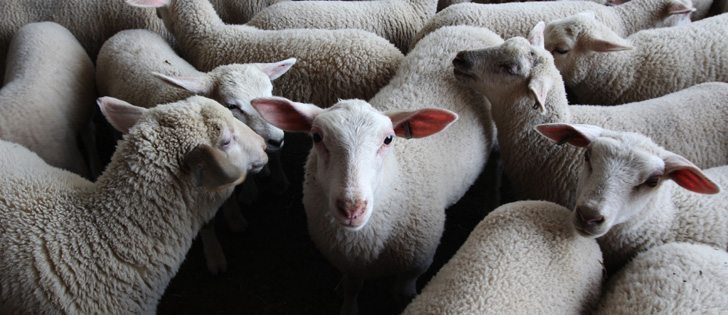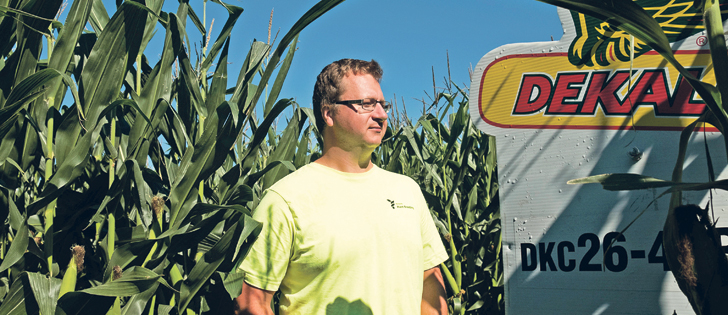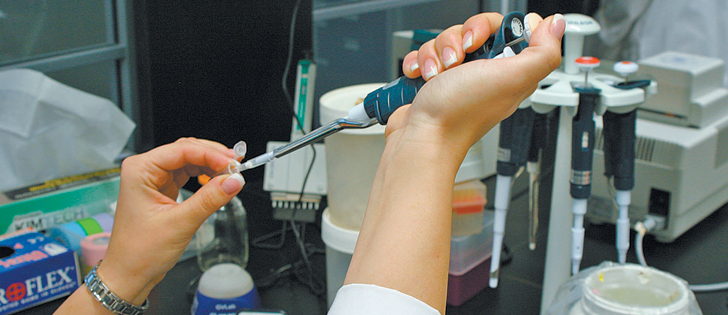LINDELL BEACH, B.C. — Research into sheep’s genetic history has found a healthy diversity that promises enormous potential for breeders and farmers.
Sheep were first domesticated 11,000 years ago in the Fertile Crescent of what is now the Middle East.
Today, there are more than 200 recognized breeds, of which researchers included 74 as part of their extensive DNA sampling.
The results, which document how humans have developed specialized breeds for meat, wool or milk, were published in PLoS Biology earlier this year.
“It was the first study that collected genetic information in sufficient density to really be able to look across the whole spectrum of breeds and look at the diversity between breeds,” said James Kijas with Australia’s Commonwealth Scientific and Industrial Research Organization (CSIRO).
Read Also

Feds propose overhaul of chronic wasting disease control program
Chronic Wasting disease control program getting updated by Canadian Food Inspection Agency with feedback encouraged from producers.
“The thing that I think was the most exciting was looking into that data to search for why breeds are different. If you think about sheep breeds, they have been selected in different directions. Some breeds have been selected for the production of wool. Others have been meat-type breeds with superior carcass production. There are dairy type breed.
“When we looked into the data and asked if we could see the consequence of that selection for specialization, the answer was that we could.”
Samples were taken from 50,000 DNA sites across the genome in 2,819 sheep, which represented 74 breeds in Asia, Africa, the Middle East, Europe, the Caribbean, North and South America and Australasia.
The project was led by Australia’s CSIRO’s scientists and included researchers in New Zealand, the Netherlands, France, the United States, Brazil and Italy.
The scientists were looking for the level of genetic diversity and the characteristics of selection for which sheep had been bred, including particular traits such as lack of horns, which was one of the earliest desired traits, coat colour, body size and reproduction.
The study has helped identify genes of economic significance such as disease resistance, which will allow breeders to continue to select for targeted health traits.
“One of the questions we asked was what is the genetic difference between breeds,” said Kijas.
“What has selection actually done? There are those (breeds) that have been raised in independent geographic regions but have these common high parasite loads. We can figure out in a very precise way those genes that evolved in mounting successful immunity response to intestinal parasites. But we’re not yet in a position to have a set of DNA markers so that we can say to a producer (that) their ram has got a combination of markers that produce animals more genetically resistant to barber pole worm. But we’re certainly moving in that direction and it’s the ultimate goal. We are making progress.”
Researchers found that the persistent level of diversity has been maintained in sheep despite the spread of breeds across time and geographic distance. Kijas sees that as significant for breeders as they plan their breeding programs for better production of wool and meat.
“We knew the domestication of sheep occurred in the Middle East between 10,000 and 12,000 years ago and they were domesticated from the Asiatic mouflon,” Kijas said.
“The sheep is a very adaptable animal and they are pretty hardy livestock. Now we have sheep spread all over the world. We would (normally) predict that genetic diversity would be highest when you transport animals outward (from the centre of domestication) and after a couple of centuries when they have been transported further away, they will have lost diversity because you have a subset of the original diversity to breed from. We tested that in sheep and found only weak evidence for that to be true. Our interpretation is because sheep are relatively small, easy to transport and there has been a lot of mixing between animals because of their portable size.”
The early consequences of domestication were that sheep, like cattle, were bred for smaller body size and the absence of horns for better manageability. Coat colour was another trait in the selection process.
“Finding things like coat colour and pigmentation related to genes was pleasing to me because it meant that the methodology that we were using and the data set that we had available were working,” said Kijas.
Other significant domestication changes were reproduction and removal of seasonality of breeding, although some breeds have retained seasonality.
Some breeds have also retained shedding capacity, in which animals will moult. Kijas said previous research had looked for the shedding gene in an attempt to introduce it to populations to avoid the expense of sheering.
A current problem, which became a welfare issue in Australia, was breeding for increased wool at the rear end of the animal. This led to wrinkling of the skin, which became a rich environment for flies and infections.
Kijas said the wrinkles can be surgically removed in a process called mulesing, but the long-term solution is to return to breeding animals with a straight conformation. It might take two or three generations, but the end result is a more productive animal with less maintenance overheads.















